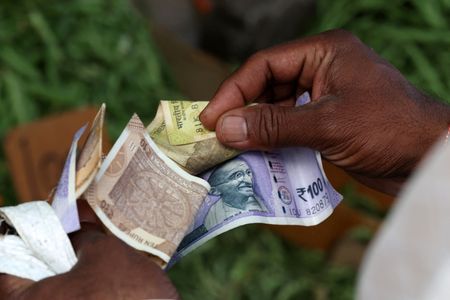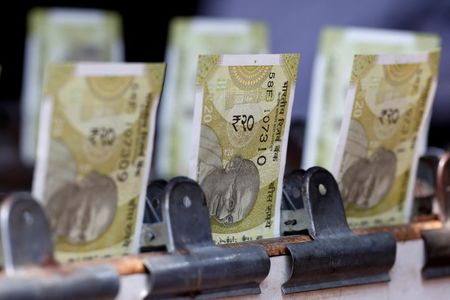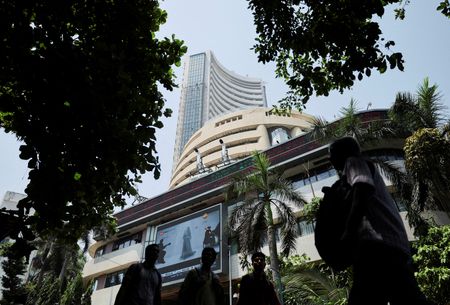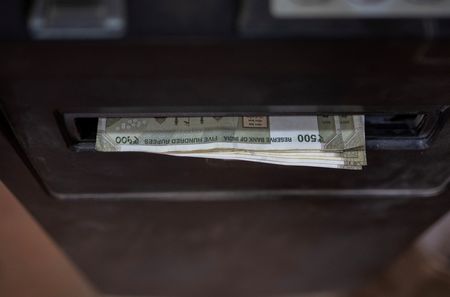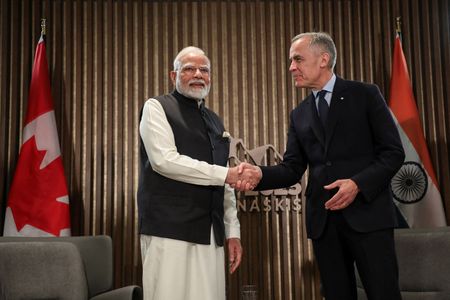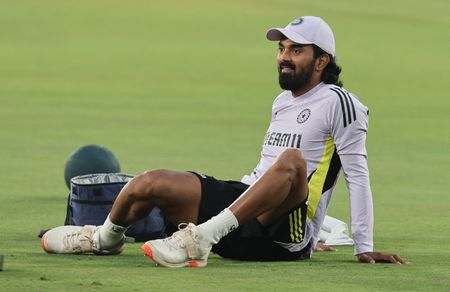By Nimesh Vora and Jaspreet Kalra
MUMBAI (Reuters) -The Reserve Bank of India stepped in aggressively on Monday to slow the downward pressure on the rupee that had built up after the local currency slipped past a key level on Friday and brought the psychological 90-mark into focus.
The rupee was last trading at 89.16 per U.S. dollar, up 0.35% on the day.
Before the 9 a.m. IST open, the interbank order-matching system had pointed to a drop past 89.50 to a new all-time low. However, that changed once the RBI stepped in. The central bank likely sold dollars on the order-matching platform and in the non-deliverable forward market, helping lift sentiment. On the back of that, the rupee opened at 89.15.
The Indian currency had broken past 88.80 on Friday, a level bankers say the RBI had held for weeks, setting off a wave of pressure expected to carry through this week.
Following Friday’s slump, conversations turned to the risk of a swift push toward the 90 level, bankers said. The central bank’s aggressive dollar sales on Monday were widely seen an effort to stop the rupee’s move before it picked up pace.
A senior treasury official at a private sector bank said the backdrop was “very heavy” for the rupee currently, noting that there was no catalyst yet to settle sentiment around the currency.
The lack of progress on a U.S.-India trade agreement has further weighed on sentiment, traders said, depriving the market of a policy boost that could have helped offset India’s widening trade deficit and the subdued pace of portfolio inflows.
HDFC Bank echoed the cautious tone, saying any lift from a potential U.S.-India trade announcement could prove short-lived
Meanwhile, RBI Governor Sanjay Malhotra on Thursday attributed the rupee’s recent weakness to higher dollar demand, which he said could abate if India and the U.S. agree a trade deal. India’s foreign reserves offer “ample protection” for the currency, he added.
(Reporting by Nimesh Vora, Jaspreet Kalra; Editing by Mrigank Dhaniwala and Janane Venkatraman)

